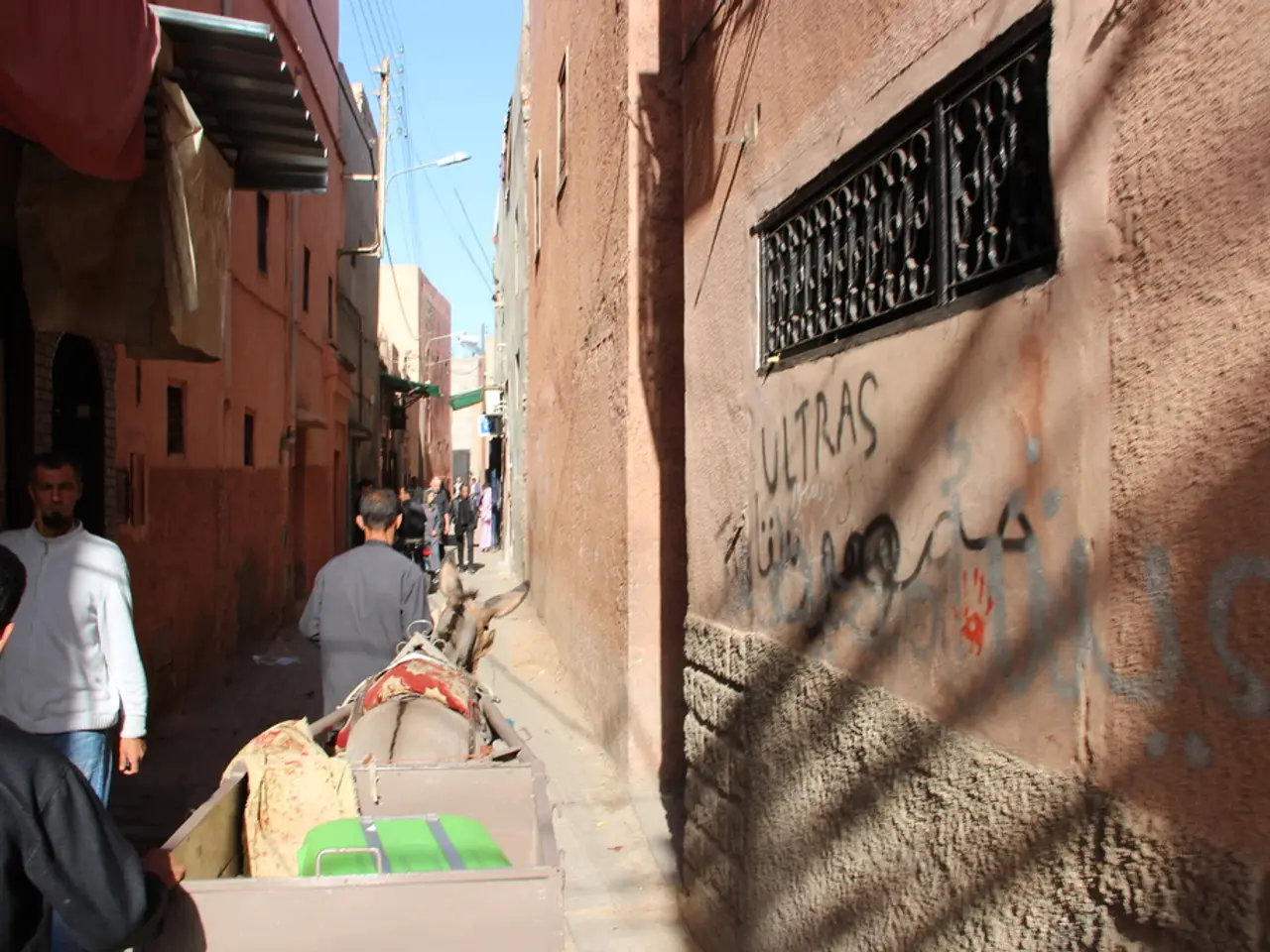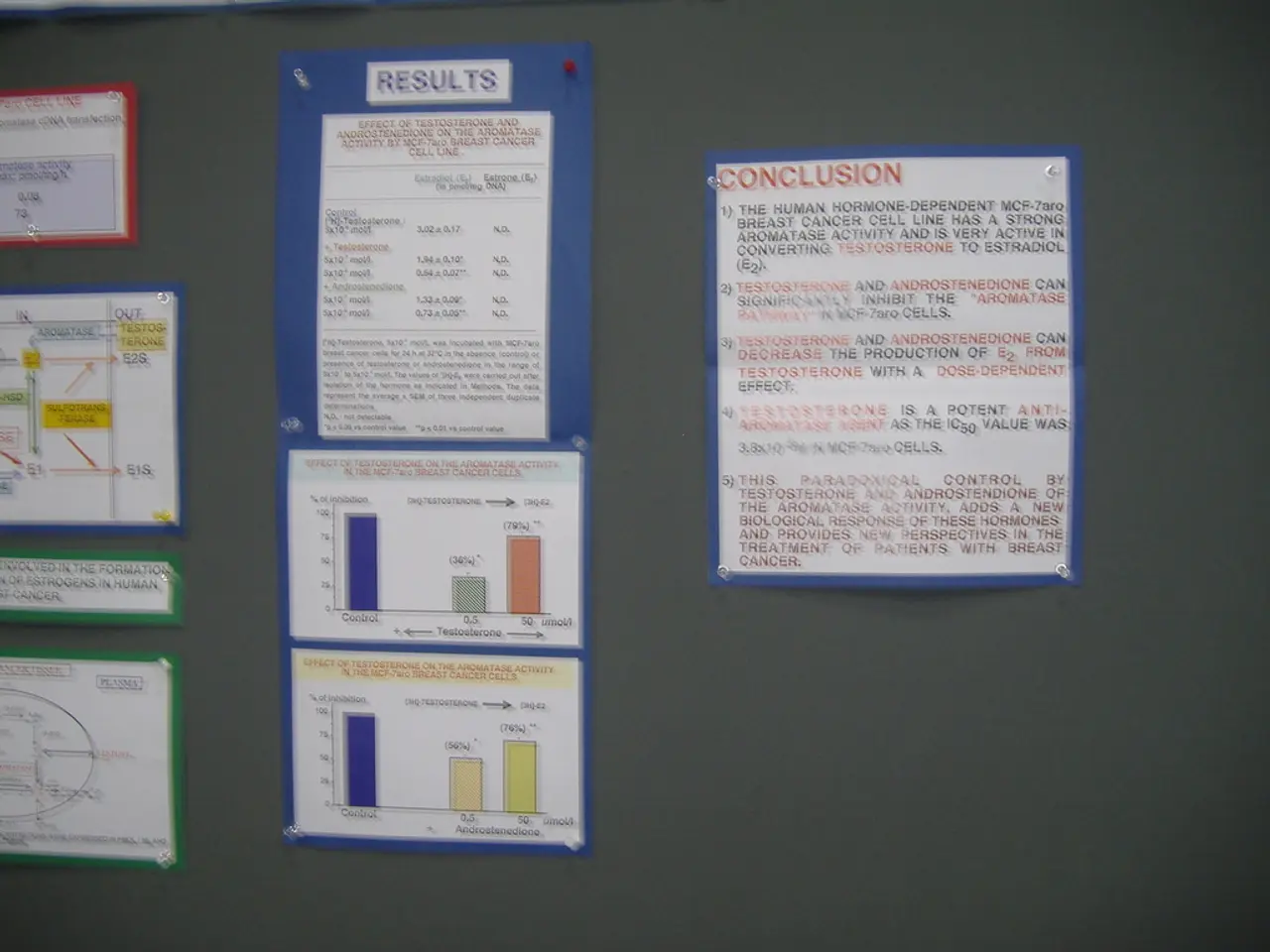Israel acknowledges receipt of 120 food shipments from diverse nations, destined for Gaza
In a troubling development, the World Health Organization has reported that at least 63 people, including 24 children under the age of five, died of starvation in Gaza alone during the month of July. This alarming figure underscores the urgent need for effective humanitarian aid distribution in the region.
The Gaza Strip is currently facing a severe risk of famine, with more than one in three residents going days without food. The situation has been further exacerbated by the complex and highly controlled entry process implemented by Israel, which has resulted in hundreds of aid trucks waiting at the border.
Israeli President Isaac Herzog stated that there are hundreds of trucks waiting to enter Gaza with aid, but the entry process remains slow and limited. Reports suggest that only about 674 trucks entered Gaza in the first eight days after Israel announced it would allow aid delivery on July 26, 2025. This amount meets less than 14% of Gaza civilians’ daily needs.
The Israeli military's practice of opening fire on crowds rushing to aid trucks has caused deaths and injuries, disrupting orderly aid distribution and deterring access. Looting of aid supplies by organized groups further complicates getting aid to those in need.
Logistical hurdles in transporting, storing, and safely distributing aid inside Gaza also pose significant challenges. Although around 200 trucks reportedly enter Gaza daily according to Israeli officials, other sources claim much fewer trucks—around 38—actually enter. Many trucks remain stalled at the border awaiting UN pickup and distribution in Gaza.
UN involvement in aid distribution is limited, and some U.S.-backed initiatives to decentralize aid distribution (increasing centers from four to sixteen) are ongoing but face opposition from Hamas and lack of UN participation.
Security measures, such as daily humanitarian pauses and designated secure routes to facilitate aid delivery, have been implemented by Israel. However, the quantity and pace of aid remain insufficient to meet urgent humanitarian needs. Reported incidents of shooting at aid-seekers at crossings create a volatile environment that hampers effective distribution.
In addition, there have been reports of some US-backed aid distribution points in Gaza becoming scenes of targeted attacks, further endangering both aid workers and recipients, and impeding humanitarian efforts.
The challenges in distributing humanitarian aid to Gaza’s residents stem from restrictive and volatile border control policies leading to slow, limited aid entry, violence and insecurity around aid delivery points, organized looting, insufficient international coordination, and logistical hurdles in transporting, storing, and safely distributing aid inside Gaza.
These factors together create a bottleneck not only in aid entering Gaza but in its equitable and effective distribution to the starving population. In response to the growing crisis, six countries, including Canada, launched 120 tons of food aid to the inhabitants of Gaza in the last few hours, and at least 500 trucks with about 25 tons of food each should enter Gaza daily, according to humanitarian organizations.
However, the UN has warned of the risk of famine in the Gaza Strip this week, and other nutrition indicators in Gaza have reached their worst levels since the beginning of the conflict, nearly two years ago. It is clear that urgent action is needed to address these challenges and ensure that aid reaches those who need it most.
[1] Human Rights Watch, "Israel/Gaza: Aid Delivery Delayed," 2025. [2] European Union, "Confidential Document: Gaza Aid Delivery Challenges," 2025. [3] United Nations Relief and Works Agency for Palestine Refugees in the Near East, "Gaza Aid Distribution Report," 2025. [4] Amnesty International, "Violence at Aid Sites in Gaza," 2025.
The challenges in distributing humanitarian aid to Gaza's residents persist, marked by restrictive border control policies leading to slow and limited aid entry, violence and insecurity around aid delivery points, organized looting, insufficient international coordination, and logistical hurdles in transporting, storing, and safely distributing aid inside Gaza.
In response to the growing crisis, humanitarian organizations have launched initiatives to increase food aid to Gaza, with at least 500 trucks with about 25 tons of food each expected to enter daily. However, these efforts are overshadowed by the risk of famine, as reported by the UN this week and, evidenced by nutrition indicators in Gaza reaching their worst levels since the beginning of the conflict, nearly two years ago.







